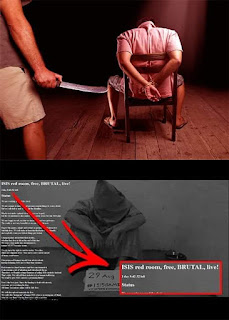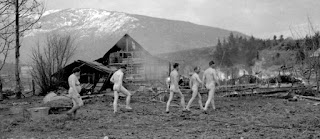While most consumers of World War II history are familiar with Malta and the epic
While most consumers of World War II history are familiar with Malta and the epic struggle the small island endured, few are aware of the similar onslaught conducted against the nearby islands of Pantellaria and Lampedusa.
Located to the west of Malta between Sicily and the Tunisian coast, these Italian-controlled islands largely escaped Allied attention for the first three years of the Mediterranean conflict, but this abruptly changed in the late spring of 1943.
As Allied authorities finalised their plans for Operation Husky, the invasion of Sicily, they determined that a valuable prerequisite to this undertaking was the seizure of Pantellaria and Lampedusa as both islands were ideally positioned to provide the Axis with early warning of the pending Allied invasion. To this end, both islands had airfields, radar installations and observation posts that increased the threat of detection for transiting Allied forces.
Likewise, Pantellaria had a large underground hanger that was capable of accommodating up to 100 aircraft and numerous caves and grottoes that were used to refuel Axis submarines and motor torpedo boats. Because of these factors and its more westerly location, Pantellaria was considered the more valuable of the two islands since it would provide the Allies with excellent facilities to support the American landings on Sicily while denying those same assets to the Axis.
That being the case, Pantellaria posed a potentially difficult target to seize. With an 11,000-man garrison, a large number of coastal guns and a generally inaccessible coastline due to cliffs, Pantellaria was reputed to be a fortress. To address these difficulties, the Allies launched a massive bombing and bombardment campaign to degrade Pantellaria’s ability and willingness to resist.
Beginning modestly on 8 May, the aerial campaign gradually intensified until by 11 June the Allies had conducted 5,285 sorties and dropped some 6,200 tons of bombs on the hapless island. Meanwhile, from the night of 12/13 May through 5 June various combinations of British cruisers and destroyers shelled Pantellaria on six separate occasions. Then on 8 June a strong British force consisting of five cruisers, eight destroyers and three motor torpedo boats subjected Pantellaria to its harshest bombardment to date.
Despite this intense pounding, calls for Pantellaria to surrender went unheeded, and the Allies decided to take the island by force. On the morning of 11 June three assault convoys rendezvoused off Pantellaria, bringing with them a brigade group from the British 1st Infantry Division embarked upon the headquarters ship Largs and the troop transports Queen Emma, Princess Beatrix and Royal Ulsterman.
At 1100 hours the British began landing operations as the covering force, commanded by Rear-Admiral R. R. McGrigor and consisting of the cruisers Orion, Newfoundland, Aurora, Euryalus and Penelope and eight destroyers, subjected the island to further preparatory bombardment. Given the sight of this transpiring assault, Pantelleria’s governor, Vice-Admiral Gino Pavesi, decided to surrender the island.
Nevertheless, the British still encountered sporadic artillery and small arms fire as their forces made their initial landings. This resistance was quickly subdued, and in the afternoon the British advanced inland against negligible opposition. By 1715 hours it was all over as Admiral Pavesi signed the official terms of surrender. With this, the British disarmed the remaining garrison and eventually took a total of 78 German and 11,121 Italian prisoners. In turn, British losses for the assault, which was designated Operation Corkscrew, amounted to just three casualties.
With the capture of Pantelleria, the Allies moved quickly to seize Lampedusa and the nearby islands of Linosa and Lampione. On the afternoon of 11 June Allied bombers turned their attention to Lampedusa, and on the 12th they subjected the island to near continuous bombing. Lampedusa’s discomfort was further intensified when the cruisers Aurora, Orion, Penelope and Newfoundland and six destroyers arrived offshore to bombard the island with naval gunfire.
This pounding proved to be more than the Italians were willing to withstand, and on the evening of the 12th a British infantry company went ashore to accept the surrender of Lampedusa and its 4,600-man garrison. Over the next couple of days Linosa and its 240-man garrison surrendered to the British destroyer Nubian, while British forces found Lampione unoccupied.
Thus, in a period of only four days the British seized all four islands and collected some 16,000 prisoners for almost no cost to themselves. Soon they would enjoy the fruits of these victories as British aircraft were operating from Lampedusa within a week, while an American fighter group began operations from Pantelleria on 26 June.
Pictured here is the aforementioned British cruiser Orion conducting a nocturnal bombardment in the Mediterranean shortly after Operation Corkscrew. Royal Navy official photographer, Tomlin, H W (Lt), Public Domain. Also pictured are men of the 1st Battalion, The Duke of Wellington’s Regiment, advancing past a burning fuel store on Pantelleria in June 1943. Radford (Sgt), No 2 Army Film & Photographic Unit, Public Domain. For more information on this and other related topics, see Blue Water War, the Maritime Struggle in the Mediterranean and Middle East, 1940-1945.











Comments
Post a Comment